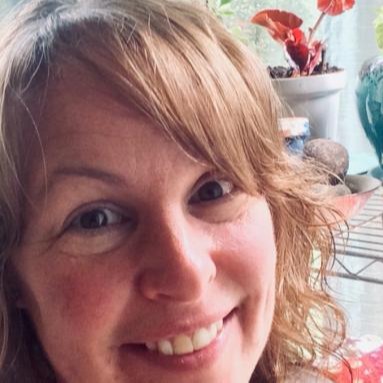A note from Katie Novak: Recently, I shared a blog, “My Struggle with the Word “Disabled” and asked for others to share their perspectives. I am floored by the response. It is my goal, with permission, to elevate and celebrate the stories that have been shared with me. In this third installment in this series, I’m happy to share the perspective of Amy Boyden, an educator, a Momma, and an advocate for all students and UDL.
I am chiming in because I found myself thinking about disability in a slightly different way this week. I was looking over a page of my own blog, a page where I (years ago when I first began) included Ross Greene’s list of “lagging skills”. His book “Lost at School” played a huge role in me getting my son services. I still feel that the list is helpful because I don’t think talking about, recognizing, or categorizing behaviors via these skills is intuitive to most parents, and I found using this as a reference very valuable.
However, I also know that using these types of tools can result in broad labels for children and these labels are often not particularly helpful. What is valuable is acknowledging areas of weakness so we can proactively remove barriers to help students build lagging skills. We need to understand disabilities well in relation to the child, not just in a label. Still, looking at my previous post, I wondered if I should take the page down entirely. The whole negatively phrased “lagging” skills jumps out at me now, and I was worried it didn’t jive with shifts in my thinking especially related to UDL. So I changed my lead on the post so it reads:
It has been years since I first created this page, and my journey that began with reading Ross Greene’s work, has become a passion for Universally Designed Learning. The big idea of UDL is that educators have the power to design flexible learning experiences that are accessible to all learners. To optimize UDL, educators identify and eliminate barriers while acknowledging student strengths and interests instead of focusing on student shortcomings. So though I still find this list helpful in some ways, as far as understanding the kinds of difficulties we often can’t see, I caution against using this list as a tool for labeling children, because every brain has the capacity for growth and change. Instead, ask your child’s teacher if they have heard of Universal Design, and if not, send them here CAST.org or novakeducation.com.
As I reflect on disability, lagging skills, and how deficit-based thinking may imply “disabled”, I am again puzzling over the best way to discuss meeting the needs of diverse learners. For instance, the school district I work in has been highlighting more asset-based language in IEP’s as opposed to focusing on student weaknesses and disability.
I had a conversation with a special education teacher/friend of mine about this. She is really good at what she does, and she expressed concern that pushing for this type of language in IEP’s could muddy the waters and make it less clear what disabilities and barriers students face. This is concerning when she has worked hard to be clear about where the problem areas lie and clear about goals for students so they can be successful. Also, disabilities and barriers don’t have to be seen as negative.
I understood her point, thinking about the art of IEP writing and how some of the ones I have seen lacked clarity and thus effectiveness. Is this the place to focus on this change in language? Or is the change even necessary? Should an IEP focus on identifying barriers and goals for overcoming/ working with/removing them or focus on student strengths? Is there a place for both? And even as I write this now, in this very moment, I know that including a child’s strengths and using asset-based language has to be a part of it all, as a way to meet them where they are.
Circling back to my dilemma with the term “lagging skills,” although I want people to see my child’s (any child’s) strengths, precise language around where the barriers are and why a child faces them is also super important. In my blog, I clarified my thinking, and provided my readers with the UDL resources available to us. I didn’t want to erase history, but did want to show where the next steps have taken me.
It strikes me now, and every time we think about these things collectively as educators, our thinking grows, changes, and deepens around how to best universally design learning for our students and embrace them for who they are.
You can reach Amy directly at boydenamy@gmail.com



